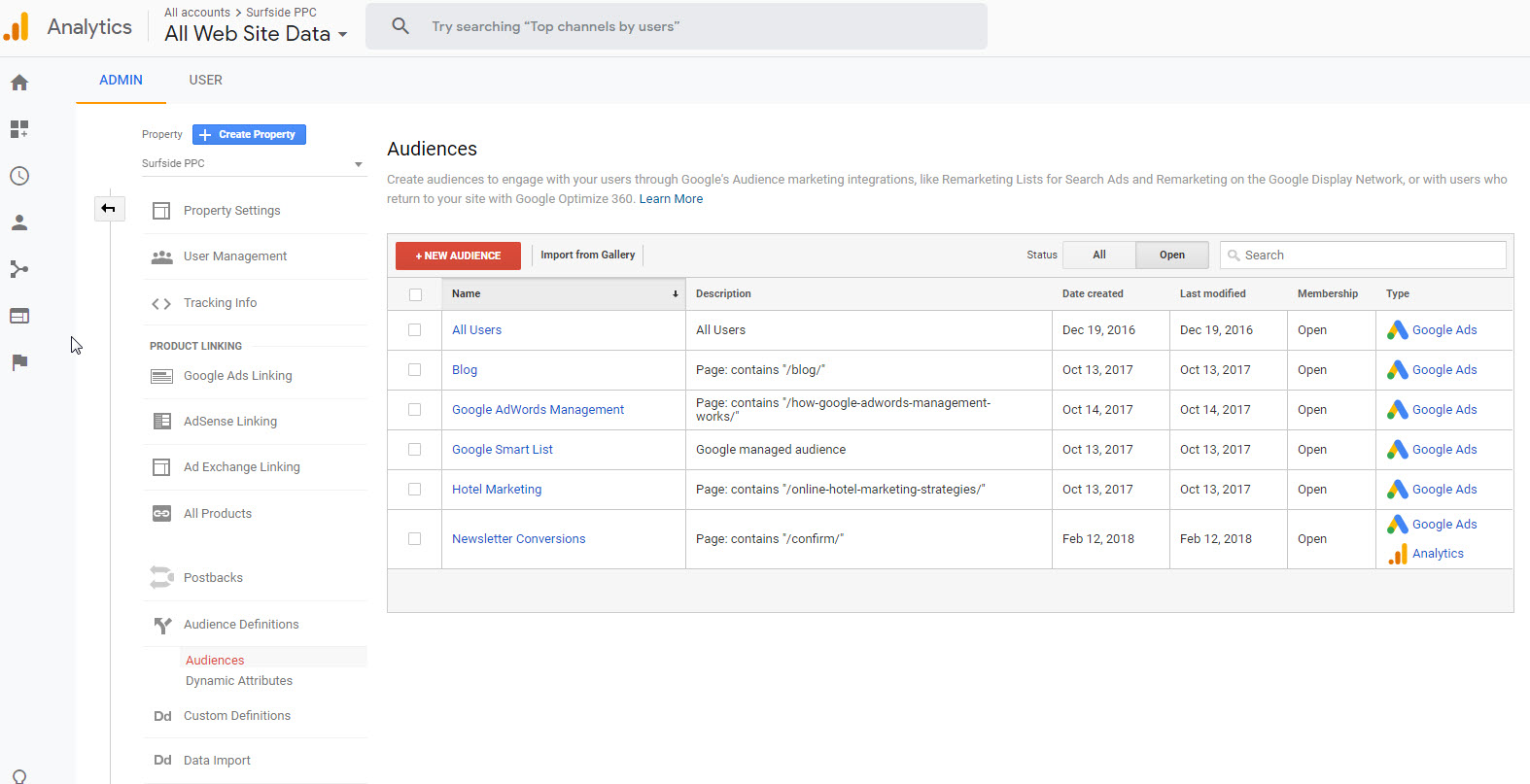A Full Guide to Remarketing In Google Analytics
A Full Guide to Remarketing In Google Analytics
Blog Article
Using Remarketing in Google Analytics: A Comprehensive Overview
Utilizing remarketing in Google Analytics provides companies a tactical edge in getting to out to prospective clients. This guide will certainly lose light on the crucial actions included in utilizing the full possibility of remarketing in Google Analytics, leading to boosted advertising results.
Comprehending Remarketing in Google Analytics
Remarketing in Google Analytics enables services to tactically target individuals that have previously communicated with their website or mobile app. By leveraging information from Google Analytics, services can produce customized remarketing checklists based upon individual behavior, such as web pages seen, activities taken, or specific objectives accomplished. This powerful device enables organizations to re-engage with individuals who have shown passion in their services or items, ultimately increasing the probability of conversion.
Understanding the various kinds of remarketing techniques is crucial for an effective project - What Is “Remarketing” In Google Analytics?. Google Analytics uses numerous alternatives, consisting of typical remarketing, dynamic remarketing, and remarketing lists for search advertisements (RLSA) Each type offers an unique objective and can be tailored to satisfy details marketing goals
In addition, analyzing the performance of remarketing campaigns is necessary for maximizing outcomes. Google Analytics provides important insights right into the performance of different remarketing strategies, enabling services to make data-driven choices and refine their targeting method. By constantly monitoring and adjusting remarketing initiatives based on analytics data, companies can optimize ROI and drive success in their advertising and marketing campaigns.
Establishing Remarketing Projects

After establishing up target market listings, the next action is to connect Google Analytics with Google Ads. By connecting these two platforms, organizations can flawlessly move audience lists from Google Analytics to Google Advertisements for remarketing functions. This integration enables more precise targeting and better project performance.
As soon as the accounts are linked, businesses can develop remarketing campaigns in Google Advertisements utilizing the audience details previously specified in Google Analytics. These projects can be customized with details ad creatives, messaging, and bidding process methods to effectively re-engage with previous visitors and drive conversions. By adhering to these steps, organizations can leverage the power of remarketing to boost their advertising initiatives and enhance ROI.
Making Use Of Audience Division Techniques

Predefined sections in Google Analytics permit you to quickly evaluate typical target market groups fresh users, returning individuals, or read the article users who finished a details objective on your website. Customized sections, on the various other hand, allow you to develop unique segments based on particular requirements that are very important to your organization purposes. Dynamic remarketing lists automatically adjust based on user behavior, revealing personalized ads to users who have interacted with your site in particular ways.
Studying Remarketing Efficiency Metrics
Upon reviewing the performance of remarketing projects in Google Analytics, the evaluation of crucial efficiency metrics offers important insights into target market involvement and conversion prices. By diving into metrics such as click-through rates (CTR), conversion prices, price per purchase (CPA), and return on ad spend (ROAS), marketing professionals can assess the success of their remarketing initiatives. CTR suggests the percentage of users that clicked the ad after seeing it, reflecting the ad's importance and allure. Conversion rates measure the percent of individuals who completed a wanted activity, such as buying, after clicking on the advertisement. Certified public accountant exposes the average price incurred for each conversion, aiding evaluate campaign productivity. ROAS, on the other hand, quantifies the earnings produced for each dollar invested on marketing. Analyzing these metrics makes it possible for marketing professionals to optimize projects, refine target market targeting, and assign budgets successfully to enhance general remarketing performance.
Enhancing Remarketing Approaches
When refining remarketing strategies in Google Analytics, concentrating on audience division is extremely important for achieving campaign success. By dividing your target market right into specific segments based on their habits, demographics, or passions, you can customize your advertisements extra effectively to each group. This targeted technique boosts the chance of involving users that have already shown interest in your product and services, leading to higher conversion rates.
Another essential element of enhancing remarketing techniques is constantly testing and refining your campaigns (What Is “Remarketing” In Google Analytics?). A/B testing different ad creatives, messaging, or deals can aid you recognize what reverberates ideal with your target market and drives explanation one of the most conversions. By examining the efficiency of these examinations in Google Analytics, you can make data-driven decisions to enhance your remarketing efforts even more
Additionally, leveraging dynamic remarketing can substantially improve your campaign results. This function enables you to show individualized ads to individuals based on their past interactions with your internet site, showcasing service or products they have formerly watched. By supplying customized material to users based upon their rate of interests and behaviors, vibrant remarketing can assist enhance engagement and drive conversions.
Conclusion
To conclude, using remarketing in Google Analytics is a calculated method to target users that have formerly involved with a website. By developing customized target market listings and utilizing audience division techniques, businesses can enhance remarketing advocate increased conversion prices. Evaluating efficiency metrics and continuously enhancing methods are critical for optimizing the efficiency of remarketing initiatives.
Google Analytics offers various alternatives, consisting of common remarketing, vibrant remarketing, and remarketing listings for search advertisements (RLSA)After setting up target market checklists, the next action is to link Google Analytics with Google Ads. By connecting these two platforms, organizations can seamlessly move target market lists from Google Analytics to Google check my source Ads for remarketing functions.As soon as the accounts are linked, services can develop remarketing campaigns in Google Ads utilizing the target market lists previously defined in Google Analytics.When refining remarketing methods in Google Analytics, concentrating on audience segmentation is paramount for attaining campaign success.
Report this page